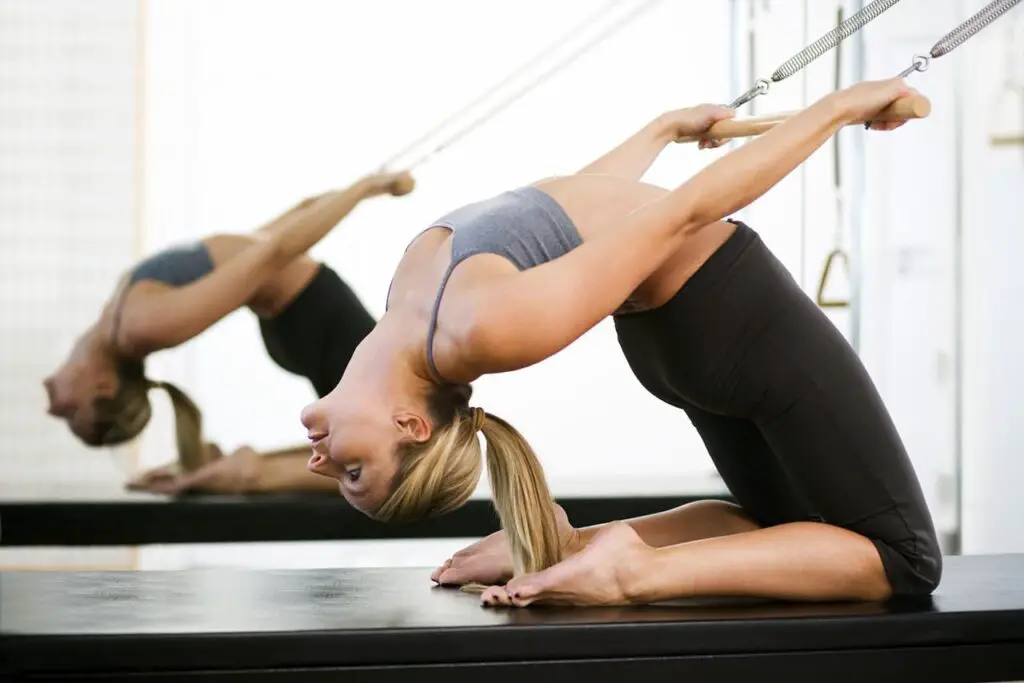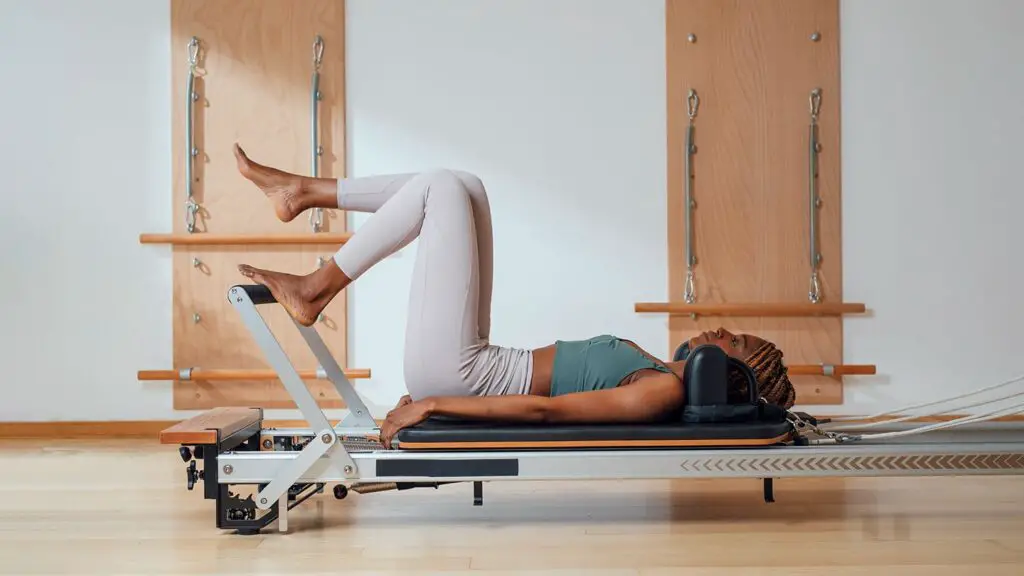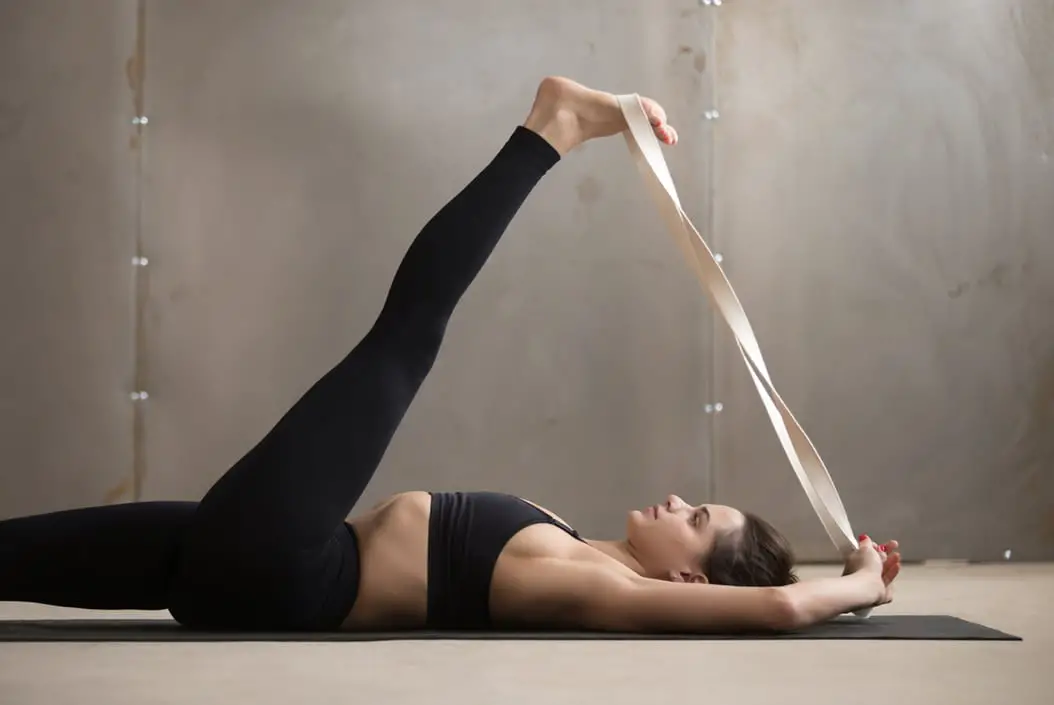Introduction
Is Pilates Good For Stretching: Unlike some forms of exercise that prioritize sheer muscle size and power, Pilates prioritizes lengthening and strengthening muscles, promoting a lean and supple physique. Through its unique blend of stretching and strengthening exercises, Pilates helps individuals not only increase their range of motion but also maintain it over time. This is particularly beneficial for those who seek improved flexibility as part of their fitness goals, whether they are athletes aiming to prevent injuries, office workers looking to combat the effects of prolonged sitting, or individuals of all ages striving to maintain mobility and quality of life.
Pilates, therefore, emerges as a powerful tool for achieving and maintaining flexibility, offering numerous advantages beyond simple stretching exercises. By addressing the body as a whole and emphasizing proper alignment and control, Pilates nurtures flexibility in a balanced and sustainable manner. Additionally, it encourages mindfulness, deep breathing, and relaxation, fostering a sense of mental and physical well-being.
As we delve deeper into the world of Pilates, we will explore the specific techniques and exercises that make it a standout choice for those seeking to enhance their flexibility, all while experiencing a holistic approach to fitness and well-being. Whether you’re a seasoned athlete or a newcomer to fitness, Pilates holds the potential to revolutionize your approach to stretching and contribute significantly to your overall health and vitality.

Does Pilates count as stretching?
We often get enquiries as to whether Pilates is better than stretching. It’s not a case of Pilates vs stretching – they go hand in hand. Pilates is a very versatile style of exercise and flexibility is a core component – it’s a great way to introduce stretching into your fitness goals.
Dynamic Stretching: Pilates exercises often involve dynamic stretching, where the muscles are lengthened and contracted simultaneously. Movements such as leg circles, the roll-up, or the saw require the practitioner to engage and elongate muscles, thus promoting flexibility.
Improved Flexibility: One of the primary goals of Pilates is to increase flexibility and range of motion. Many Pilates exercises focus on elongating muscles, which can be considered a form of stretching.
Mindful Stretching: Pilates encourages practitioners to maintain awareness of their body’s position and alignment during exercises. This mindfulness aspect closely resembles the attention to detail required in traditional stretching routines.
Stretching within Exercises: In Pilates, stretching is often integrated into the exercises themselves. For example, in the “swan dive,” the back muscles are stretched as you lift your chest and legs off the mat.
Which is better for stretching Pilates or yoga?
When it comes to building flexibility, yoga may be the better choice. That’s thanks to its focus on stretching. ‘Pilates doesn’t emphasize stretching to the extent that yoga does,” Basso says. She explains that in many styles of yoga, students hold poses for extended periods.
Flexibility and Balance: Yoga postures are designed to promote flexibility and balance in the body. Holding poses for extended periods allows for deep stretches in various muscle groups.
Stress Reduction: The meditative aspect of yoga helps reduce stress, which can lead to muscle tension. Relaxed muscles are more receptive to stretching.
Breath Awareness: Yoga places a strong emphasis on breath awareness, which can enhance the effectiveness of stretching by allowing for deeper relaxation and release of muscle tension.
Range of Motion: Many yoga poses work on improving the range of motion in joints, making it an excellent choice for individuals looking to increase their overall mobility.
Will Pilates loosen tight muscles?
Pilates is a system of exercise that incorporates stretching and strengthening exercises that help you to realign your body and balance out any weak or tight muscles that you may have.
Stretching: Pilates includes a variety of stretches that are integrated into exercises. These stretches are designed to lengthen muscles, improve joint mobility, and alleviate muscle tightness.
Strengthening the Core: A strong core supports the body’s overall stability and posture. As Pilates emphasizes core strength, it can help alleviate muscle imbalances that contribute to tightness.
Improved Posture: Pilates encourages proper alignment and posture, reducing the strain on muscles that can lead to tightness in the first place.
Mind-Body Connection: Pilates promotes mindfulness, allowing individuals to become more aware of their bodies and areas of tension. This awareness can lead to a conscious effort to relax and release tight muscles.
Consistency: Regular practice of Pilates can lead to progressive improvement in flexibility and muscle suppleness, ultimately helping to loosen tight muscles.
Who should not do Pilates?
Chronic Medical Conditions: Certain chronic medical conditions, such as heart disease, high blood pressure, or diabetes, may require modifications to certain pilates exercises or even complete avoidance of certain movements.
Pregnancy
While Pilates can be adapted for pregnant individuals, it’s essential to consult a prenatal fitness specialist. Some Pilates exercises may not be suitable during the first trimester.
Pregnant individuals with certain complications, such as placenta previa or preterm labor, should avoid Pilates altogether.
Severe Back or Neck Pain
Pilates may help manage back pain in some cases, but it can worsen symptoms for those with severe herniated discs or other spinal issues. Always consult a healthcare provider for proper assessment and guidance.
Uncontrolled Chronic Medical Conditions
While gentle Pilates may be suitable for individuals with controlled asthma, those with severe, uncontrolled asthma may find it challenging due to the potential for increased breathing demands during exercise.
Individuals with diabetes should monitor their blood sugar levels before, during, and after exercise, including Pilates, to avoid complications.
Lack of Proper Instruction
Novices to Pilates should seek proper instruction, ideally from a certified and experienced Pilates instructor. Attempting advanced exercises without the necessary foundation can lead to injury.
Individual Preferences and Comfort Level
Some individuals may simply not enjoy Pilates or feel comfortable with its movements. Fitness should be an enjoyable and satisfying experience, so if Pilates doesn’t align with your preferences, explore other activities.
What comes first Pilates or stretching?
Do you need to stretch before Pilates? Yes, you should warm up before Pilates to make sure you get the most out of your lesson.
Warm-Up: Pilates exercises often involve controlled movements that gradually warm up the muscles and increase blood flow. This gentle warm-up can prepare your body for more intense stretching.
Strengthening: Pilates emphasizes core strength and muscle engagement. Performing Pilates exercises first can help stabilize your core and enhance your overall control, which can be advantageous when stretching.
Injury Prevention: Engaging in Pilates before stretching may help reduce the risk of injury. It allows you to establish better body awareness and control, reducing the likelihood of overstretching or straining a muscle during subsequent stretching.
Improved Flexibility: Some Pilates exercises incorporate dynamic stretching within the movements themselves. This can gradually improve flexibility and joint mobility.
Which is harder Pilates or yoga?
Pilates is certainly a more intense workout that burns calories faster and produces physical results quicker, so you could make the argument that Pilates is the harder of the two. But again, everything comes down to what you wish to get out of the class and the methods your instructor takes to get you there.
Individual Variation: The perceived difficulty of both Pilates and yoga can vary widely from person to person. Factors such as fitness level, prior experience, age, and body type play a significant role in how challenging these practices are.
Style Matters: Within both Pilates and yoga, different styles and classes cater to varying levels of difficulty. Some Pilates classes are gentler and suitable for beginners, while others are more intense. Similarly, yoga offers styles like gentle Hatha and vigorous Ashtanga, which vary in difficulty.
Complementary Practices: Many people find that Pilates and yoga complement each other well. The core strength and stability gained from Pilates can enhance yoga practice, while the flexibility and relaxation from yoga can benefit Pilates.
Progression: As you become more proficient in either Pilates or yoga, you can advance to more challenging exercises or poses. The initial difficulty may become more manageable with consistent practice.
What is better than Pilates?
Weight training is an undisputed winner here. With Pilates, you typically build lean and strong muscles, but it is not an appropriate form of exercise for gaining bulky arms or legs. As weight training involves lifting heavy weights at low or high intensity, you can gain muscular and bulkier body form.
Yoga
Yoga shares similarities with Pilates, such as improving flexibility, balance, and mental well-being. However, it also focuses on breath control, mindfulness, and meditation, offering a more holistic approach to fitness.
Yoga is suitable for individuals of all fitness levels and can be adapted to various goals, from relaxation and stress reduction (in practices like restorative yoga) to intense physical workouts (in practices like Ashtanga or Vinyasa yoga).
Strength Training and Weightlifting
Strength training and weightlifting are excellent for building muscle mass, increasing bone density, and boosting metabolism. These forms of exercise can lead to significant improvements in overall strength and body composition.
Individuals looking to increase muscle size and strength or enhance athletic performance may find strength training and weightlifting more suitable than Pilates.
High-Intensity Interval Training (HIIT)
HIIT workouts are known for their efficiency in burning calories, improving cardiovascular health, and increasing endurance. They often involve short bursts of intense exercise followed by brief rest periods.
HIIT is ideal for those with limited time for workouts who still want to achieve substantial fitness gains. It’s also great for individuals seeking an intense cardiovascular challenge.
Why do people prefer Pilates over yoga?
The most common response was that Pilates “is more dynamic” and “it is better suited to those who are hoping to lose weight and tone up”. Several of those polled stated that Pilates “feels like a proper workout”, while others suggested that it was a more “fun” way to increase their heart rate.
Focused Core Strengthening
One of the primary attractions of Pilates is its intense focus on core strengthening. Pilates exercises systematically engage the deep abdominal muscles, obliques, and lower back. People who prioritize developing a strong core often prefer Pilates for its targeted approach.
While yoga does engage the core, it does so indirectly through various poses. Pilates offers a more structured and direct method for strengthening the core muscles.
Precision and Controlled Movements
Pilates places a strong emphasis on precision and controlled movements. The exercises involve specific alignments, breathing techniques, and controlled sequences. Individuals who appreciate structured and detail-oriented workouts find satisfaction in Pilates.
Yoga, in contrast, often encourages fluidity and exploration of poses, which can be appealing to those who prefer a more flowing and less structured approach to exercise.
The preference for Pilates over yoga is influenced by individual fitness goals, exercise preferences, and specific needs. Pilates stands out for its targeted core strengthening, precision, and controlled movements, making it a compelling choice for those seeking a structured and progressive fitness regimen. Ultimately, the choice between Pilates and yoga depends on personal resonance and alignment with one’s unique goals for physical and mental well-being. Many individuals also find value in incorporating elements of both Pilates and yoga into their overall fitness routines for a balanced and fulfilling fitness journey.

Conclusion
Pilates stands apart from many other stretching practices due to its holistic approach. It doesn’t isolate muscle groups or focus solely on passive stretches; instead, it engages the entire body through controlled, dynamic movements. This approach leads to not just increased flexibility but also improved strength, balance, and posture. Pilates doesn’t merely make you more flexible; it makes you functionally flexible, which can have a profound impact on your daily life, sports performance, and injury prevention.
Pilates offers a customizable journey to flexibility. Whether you’re a beginner or an advanced practitioner, Pilates exercises can be adapted to meet your specific needs and goals. Instructors can tailor routines to target your trouble spots, ensuring that you progress at your own pace while challenging yourself appropriately. Beyond the physical benefits, Pilates brings a holistic dimension to stretching. It promotes mindfulness, deep breathing, and relaxation, fostering a sense of mental well-being that complements its physical gains. This integration of mind and body makes Pilates a unique and transformative practice.
Pilates is inclusive, making it accessible to people of all ages and fitness levels. Its low-impact nature makes it particularly suitable for individuals recovering from injuries or those with joint issues. It can serve as a gentle entry point into the world of flexibility for beginners, gradually building their strength and suppleness.

